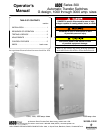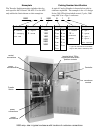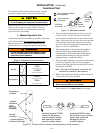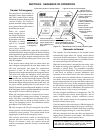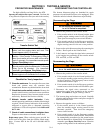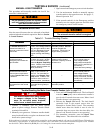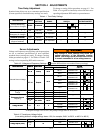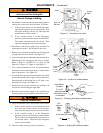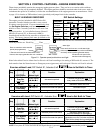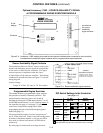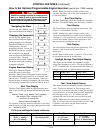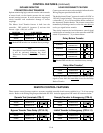
SECTION 1 INSTALLATION
1-- 1
A S CO Series 300 Au tom atic Tran sfer Switches (ATSs) are
Listed under U nderwriters Laboratories U L 1008 Standard
for S afety f or A utomatic Transfer S w itches. Series 300s are
also Listed unde r CSA C22.2 No. 178 Standard for ATSs.
All control features are U L Component R ec ogn ized, which
assures t hat ASCO automatic transfer sw itches meet
OSH A Safety Requ irem en ts and wil l be acce ptab l e to
elec tric al inspectors .
ASCO Series 300 Automatic Transfer Switches are
suitable for emergency and standby system applications.
They meet emergency system rating requirements as
defined in National Electrical Code (NEC) Article 700
and UL 1008. Also, they are sui table for the
requirements of NEC Article 517 – Health Care
Facilities, NEC Article 701 – L egally Required Standby
Systems, NEC Article 702 – Optional Standby Systems,
NFPA 99 Health Care Facilities, and NFPA 110
Emergency and Standby Power Systems.
Rating Label
Eac h automatic transfer switch contains a r atin g lab el to
define the loads a nd faul t circuit w ithstand / cl osing ratings.
Refer t o the label on the transfer switch for specific values .
Do not exceed the values on the rating label.
Exceeding the rating can cause personal injury
or serious equipment damage.
Series 300 Automatic Transfer Switches are factory wired
and tested. Installation requires skid removal then
securing the enclosure to the supporting foundatio n.
Remove the Shipping Skid
Open the front door and remove the four lag screws (two in
front, two in rear) securing the enclosure to the wood skid.
Supporting Foundation
The supporting foundation for the enclosure must be
level and straight. Refer to the applicable enclosure
outline drawing included with the Series 300 for all
mounting de tails including door opening space.
If bottom cable entry is used, the foundation must be
prepared so that the conduit stubs are located correctly.
Refer to the enclosure outline drawing for specified area
and location. Provide cable bending space and clearance
to live metal parts. When a concrete floor is poured, use
interlocking conduit spacer caps or a wood or metal
template to maintain proper conduit alignment.
Mounting
Refer to t he applicable enclosure outline drawing
furnished with this switch and mount the Series 300
according to details and instructions shown on diagram.
Auxiliary Cable Box for 1000–2000 amp
An auxiliary cable box is required if the power cables do
not enter the enclosure directly adjacent to the terminal
lugs (for example, if all power cables enter the top or
bottom). Order ASCO part no. 609027 if needed.
Do not route the power cables along
the s ides of the Transfer Switch.
Line Connections
Refer to the Wiring Diagram provided with your Series
300 ATS. All wiring must be made in accordance with
the National Electrical Code and local codes.
It is unnecessary to remove pole covers from the transfer
switch. If you do remove them, reinstall them carefully.
De–energize the conductors before making any
line or auxiliary circuitry connections. Be sure
that Normal and Emergency li ne connections
are in proper phase rotation. Place engine gen-
erator starting cont rol in the OFF position. Make
sure engine generator is not in operation.
Testing Power Conductors
Do not connect the power conductors to the Series 300
transfer switch until they are tested. Installing power
cables in conduit, cable t roughs and ceiling-suspended
hangers often requires considerable force. The pulling
of cables can damage insulation and stretch or break the
conductor’s strands. For this reason, after the cables are
pulled into position, and before
they are connected, they
should be tested to verify that they are not defective or
have been damaged during installation.
Protect the switch from construction grit
and m etal chips to p revent malfunction or
shortened life of the automatic switch switch.
Connecting Power Conductors
After the power cables have been tested, connect them
to the appropriate terminal lugs on the transfer switch as
shown on the wiring diagram provided with this Series
300. Make sure the lugs provided are suit able fo r use
with the cables being installed. Standard terminal lugs
are solderless screw t ype and will accept the wire sizes
listed on the drawings provided with the Series 300. Be
careful when stripping insulation from the cables; avoid
nicking or ringing the conductor. Remove surface oxides
from cables by cleaning with a wire brush. When
aluminum cable is used, apply joint compound to
conductors. Tighten cable lugs to the torque specif ied
on rating label.



